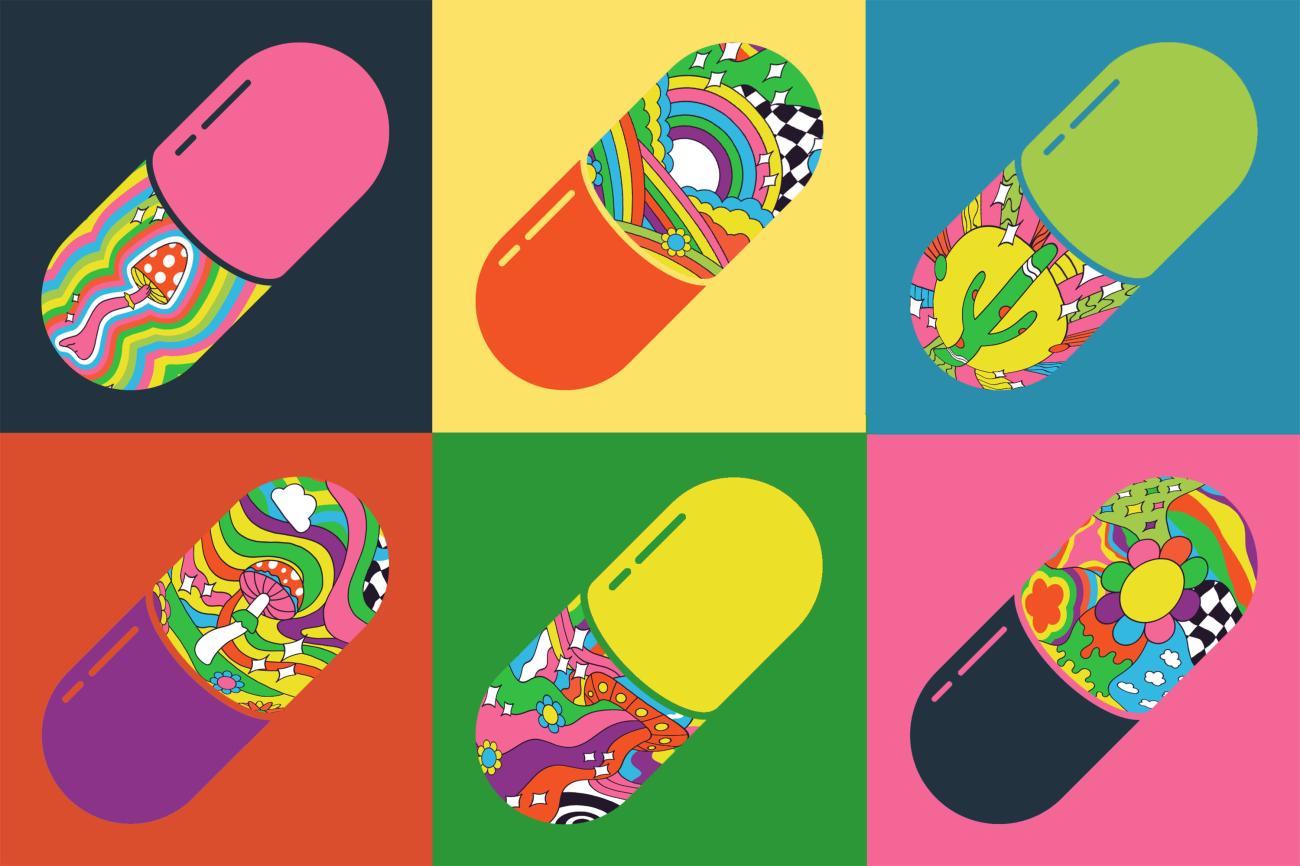Digital education is reshaping how psilocybin researchers learn by compressing access to talks, datasets, and methods into formats that fit busy labs and clinics. Web based platforms host live sessions, on demand archives, and searchable repositories, which lets teams compare protocols, download tools, and apply lessons to study start up without waiting for conference season.
How web tools are reshaping knowledge access
Psilocybin research depends on methods that must be visible and repeatable. Digital channels give investigators fast access to protocol language, therapist manuals, and pharmacy intake checklists. Early career staff can watch recorded sessions that walk through kit logging and temperature file downloads. Senior investigators can review panel debates on endpoints or timing windows before locking a statistical plan.
The shift also reduces geographic bias. A coordinator in Worcester can watch the same mechanistic talk as a PI in San Diego. A research pharmacist in Cambridge can compare intake forms from two hospitals and adapt the best elements. Centralized hubs linked to preprints and code notebooks help teams keep a single source of truth for each topic.
Well run channels share three traits. Content maps to decisions that teams face during start up. Files come in practical formats such as checklists, label proofs, and binder maps. Sessions save time by showing real examples, not slides with vague claims.
Webinars virtual conferences and workshops
Live webinars let investigators ask focused questions in real time. When sessions target a single bottleneck such as blinded labeling or interlab comparisons for psilocybin and psilocin assay, participants leave with steps they can use the same day. Strong webinars make speakers show a template, then pause while viewers copy the structure for their own site.
Virtual conferences provide scale with less travel. Plenary talks set context, then breakouts go deep on analytics, pharmacy, or therapist training. Poster halls now mix static PDFs with short recorded pitches, which helps junior staff share work and collect feedback. Session tags and replay indexes allow busy clinicians to find what they need fast.
Workshops that pair short talks with hands on files convert interest into skill. A two hour intake lab can give a pharmacy team a mock airway bill, a permit excerpt, and a carton of pilot kits. Staff practice seal checks, label verification, kit logging, and temperature downloads. The same format works for eCRF builds. A data group can load a template visit schedule for session days, set edit checks for timing windows, and test exports that feed the analysis plan.
Peer reviewed study databases and open science platforms
Searchable databases are the backbone of credible education. They allow teams to trace claims to publications, and to compare effect sizes across methods. For psilocybin work, two layers matter. The first is access to peer reviewed papers. The second is access to de identified data, code, and product files that make results reproducible.
A practical approach is to keep a shared tracker for each topic that links the study registration, the paper, and any posted dataset or code. The tracker should list endpoints, visit windows, and inclusion criteria in a simple table so staff can compare across trials. When a team plans a new protocol, they can filter that table for depression or oncology distress and see what timepoints worked in past studies.
Open platforms add value when they provide guardrails. Upload forms should ask for data dictionaries, variable labels, and code that runs from raw to figures. Version history must record who changed what and when. Access controls should protect privacy with role based settings. Clear terms help outside groups reuse materials in methods papers or training without confusion.
Lab methods belong in these hubs too. Redacted COAs, stability summaries, and outlines of HPLC or LC MS validation steps help site labs reproduce supplier assays before first shipment. A short note on acceptance ranges and system suitability criteria can save a week of emails and reduce the chance of a late inspection finding.
Role of video and podcasts in reaching younger audiences
Video and audio formats reach students and early career staff who are juggling clinic, classes, and lab time. Short videos can show the reality of session day flow that is hard to capture in text. A three minute clip can demonstrate room setup, call system checks, and safety equipment placement. Another can cover the exact steps for downloading a temperature logger and filing the report.
Podcasts extend access during commutes or chores. Episodes that feature a trial coordinator and a research pharmacist offer a view of daily work that textbooks miss. Topics such as mock intake, kit reconciliation, and session timing become more concrete when staff tell a brief story about a near miss and the fix. Hosts should avoid patient details and focus on process, tools, and teamwork.
For both formats, quality comes from purpose. Each episode should answer a practical question such as how to write a short SOP for seal checks, or how to schedule therapist supervision with fidelity scoring. Guests should share a file or template in the notes. Viewers learn faster when they can download the exact job aid used in the clip.
Opportunities for institutions to share data widely
Massachusetts universities and hospitals can lead by publishing materials that others can apply with minimal editing. The aim is not a glossy package. It is a small set of files that align with how sites work.
Binder maps and file indices
Post a simple binder map that lists tabs for IRB approvals, DEA registration, permits, COAs, release letters, stability data, shipment memos, intake logs, temperature reports, accountability, deviations, and destruction certificates. Include a one page index template that a coordinator can adapt in an hour.
Pharmacy intake kits
Share a mock intake packet with a sample airway bill, a permit excerpt, and label proofs. Add an intake checklist with fields for seal checks, counts, logger IDs, and file names for uploads. A short form reduces varied practices across sites and shortens the first audit.
Therapist manuals and fidelity rubrics
Publish preparation, support, and integration manuals with brief rubrics that supervisors can use for case reviews. Keep the forms short so they fit a busy clinic. Standard rubrics reduce drift and make multi site trials less variable.
eCRF visit templates
Offer a session day visit schedule with timestamps and edit checks for windows. Add standard adverse event forms with fields for onset, resolution, and relation. A tested template reduces build time and produces cleaner datasets.
Interlab comparison plans
Provide a two page SOP for method comparison that lists standards, ranges, and pass criteria for psilocybin and psilocin assay. Include a blank report form. Site labs can run the check and file it before first shipment, which speeds inspection.
Open code and figures
When publishing, post code that regenerates key tables and figures from raw datasets. Redact sensitive fields as needed, keep variable labels clear, and version the repository. Others can rerun models, test sensitivity, and learn from your pipeline.
Institutions in the state already share across campuses for other trials. Extending that habit to psilocybin reduces start up time for new teams and raises the floor for quality across regions.
Building community through digital knowledge
A strong digital education program builds more than skill. It builds a community that values method and accountability. That community lowers risk on session days and in audits because staff share tools that work and retire forms that cause errors.
Start small with a public page that hosts a few high value files. Add a rhythm of short webinars that focus on single tasks such as kit reconciliation or rescue thresholds. Invite pharmacy and therapy staff to record five minute clips that show how they manage real steps under time pressure. Encourage students to contribute intake checklists, room setup guides, or binder indices that they refined during rotations.
Create feedback loops. After a trial, hold a debrief session that covers what went well and what broke. Post the revised intake checklist or eCRF template with a short note on the change. Make it easy for other sites to comment or propose edits. Over time you will build a library that reflects field practice rather than a static document.
Digital education also supports fair access to training. A student in Springfield can learn the same intake steps as a pharmacist in Boston. A coordinator at a small site can adapt a binder map from a larger center. This reduces the gap between resource rich hospitals and newer programs, which supports safer studies and steadier data.
Suppliers should join this model. Provide redacted COA examples, stability outlines, and shipment memo templates that match import permit fields. Attend mock intake webinars and answer practical questions about carton maps or logger downloads. As suppliers, we align kit maps and shipment records with hospital workflows so pharmacy steps match documents and labels, which helps new teams start without preventable delays.
Psilocybin research will keep expanding. The fastest way to raise standards is to publish the simple tools that protect visit windows and data integrity. When institutions, suppliers, and CROs share checklists, templates, and code, knowledge moves with fewer barriers. Students gain skills that match real roles. Coordinators avoid common mistakes. Pharmacists and therapists work from the same playbook across cities.
Digital education is not a side project for this field. It is the method that keeps trials on schedule and audit files clean. With steady sharing of practical files, focused sessions, and recorded walkthroughs, the psilocybin community can learn at the speed that modern science demands and bring careful work to more sites across Massachusetts and the United States.




